This is the most in depth tire test Tire Reviews has ever performed! This UHP summer tire test will compare six of the very best ultra high performance tires, and including a full wear test, some cooler temperature testing, and worn state testing!
On test we have the latest and greatest 18" sports tires from Bridgestone, Continental, Goodyear, Hankook, Michelin and Yokohama. As usual we'll be covering every aspect of the tires performance, including the wet performance, dry grip, internal noise, comfort, rolling resistance and the all important wear!
4 categories (18 tests)
| Test Category | Best Performer | Worst Performer | Difference |
|---|---|---|---|
| Dry (4 tests) | |||
| Dry Braking | ▲ Goodyear Eagle F1 Asymmetric 6: 33 M | ▼ Yokohama Advan Sport V107: 34.68 M | 1.7 M (4.8%) |
| Dry Handling | ▲ Yokohama Advan Sport V107: 73.58 s | ▼ Hankook Ventus S1 evo 3: 74.98 s | 1.4 s (1.9%) |
| Subj. Dry Handling | ▲ Michelin Pilot Sport 5: 100 Points | ▼ Hankook Ventus S1 evo 3: 92 Points | 8.0 Points (8.7%) |
| Subj. Fun | ▲ Yokohama Advan Sport V107: 10 Points | ▼ Hankook Ventus S1 evo 3: 7 Points | 3.0 Points (42.9%) |
| Wet (7 tests) | |||
| Wet Braking | ▲ Continental PremiumContact 7: 27.1 M | ▼ Yokohama Advan Sport V107: 29.7 M | 2.6 M (8.8%) |
| Wet Braking - Cool | ▲ Continental PremiumContact 7: 27.9 M | ▼ Yokohama Advan Sport V107: 32.3 M | 4.4 M (13.6%) |
| Wet Braking - Worn | ▲ Bridgestone Potenza Sport: 40.5 M | ▼ Yokohama Advan Sport V107: 44.9 M | 4.4 M (9.8%) |
| Wet Handling | ▲ Bridgestone Potenza Sport: 91.2 s | ▼ Michelin Pilot Sport 5: 94.67 s | 3.5 s (3.7%) |
| Subj. Wet Handling | ▲ Goodyear Eagle F1 Asymmetric 6: 100 Points | ▼ Yokohama Advan Sport V107: 90 Points | 10.0 Points (11.1%) |
| Straight Aqua | ▲ Continental PremiumContact 7: 80.9 Km/H | ▼ Yokohama Advan Sport V107: 76.8 Km/H | 4.1 Km/H (5.3%) |
| Curved Aquaplaning | ▲ Continental PremiumContact 7: 6.31 m/sec2 | ▼ Hankook Ventus S1 evo 3: 5.21 m/sec2 | 1.1 m/sec2 (21.1%) |
| Comfort (2 tests) | |||
| Subj. Comfort | ▲ Goodyear Eagle F1 Asymmetric 6: 100 Points | ▼ Yokohama Advan Sport V107: 90 Points | 10.0 Points (11.1%) |
| Noise | ▲ Continental PremiumContact 7: 71.9 dB | ▼ Yokohama Advan Sport V107: 72.9 dB | 1.0 dB (1.4%) |
| Value (5 tests) | |||
| Wear | ▲ Michelin Pilot Sport 5: 30595 KM | ▼ Bridgestone Potenza Sport: 20459 KM | 10,136.0 KM (49.5%) |
| Value | ▲ Hankook Ventus S1 evo 3: 3.16 Price/1000 | ▼ Bridgestone Potenza Sport: 4.53 Price/1000 | 1.4 Price/1000 (30.2%) |
| Price | ▲ Hankook Ventus S1 evo 3: 73.3 | ▼ Michelin Pilot Sport 5: 107.2 | 33.9 (31.6%) |
| Rolling Resistance | ▲ Continental PremiumContact 7: 8.4 kg / t | ▼ Bridgestone Potenza Sport: 10.3 kg / t | 1.9 kg / t (18.4%) |
| Abrasion | ▲ Michelin Pilot Sport 5: 65.7 mg/km/t | ▼ Hankook Ventus S1 evo 3: 97 mg/km/t | 31.3 mg/km/t (32.3%) |
Wet
The wet grip of a tire is a critical aspect for a driver, especially in adverse weather conditions, and in this test all the tires showcased great grip around the wet lap, with just a 3-second difference between the top and bottom performers – a small gap for a 93-second lap!
The Yokohama and Michelin tires were the slowest, albeit with starkly different behaviors. The Michelin offered a comfortable driving experience, characterised by responsive steering and a progressive understeer balance. Despite the cooler testing conditions, Michelin's consistent time and grip over three laps indicates its suitability for real-world applications.

Conversely, Yokohama's performance was distinctive. While its super-quick steering resulted in a fast front axle turn, the rear showed a tendency to swing more. Although this made for a fun track experience, it might not be as enjoyable on the road. Another notable aspect was Yokohama's warm-up time. The tire's first lap was a second slower than the second, pointing to a temperature-related grip increase. This suggests the Yokohama might shine in dry, race-like conditions. However, for everyday use, the Michelin might be a safer bet.
Next in line was the Hankook. Despite its impressive grip, the tire felt slow to respond to steering, behaving more like a touring tire than a sports variant. It shared Michelin's safe understeer balance but lacked the latter's willingness to turn.
Continental and Goodyear's performances were notable, with Continental's new PremiumContact 7 showing a significant improvement in wet conditions compared to its predecessor, the PC6. This model was far less sensitive to load changes and behaved much like the Michelin, albeit with slightly less communication at the limit.
Goodyear’s performance might not have been the fastest, trailing the best by only 0.8%, but it excelled in overall balance. It combined the safe understeer balance of the Michelin and Continental with some sporty handling, proving both predictable and quick. As an all-rounder for this Golf GTI, Goodyear's Asymmetric range was the standout, demonstrating impressive performance in the wet.
Finally, the Bridgestone Potenza Sport took the crown as the fastest tire, albeit by a small margin. Its lateral grip was exceptional, giving it a sporty feel, second only to the Yokohama. This tire got grippier as it warmed up, similar to the Yokohama. Drivers seeking an exciting wet drive might find this tire worth considering.
The standout performer in wet braking was the newest tire on test, the PremiumContact 7, though the results are nuanced.
We conducted wet braking tests in three different ways, twice at the new state and once at the worn state. For the new state, we tested at different temperatures. Ideally, we wanted the cold temperature test to be at around 5-7°C, but logistical delays meant we tested with an average air temperature of 8°C and water at 12°C. While this was cooler than standard test conditions, it was still warmer than real-world conditions. The warm temperature test was done at an average of 18°C air and 19°C water.
Why are these temperatures significant? It's become increasingly apparent that some tire manufacturers could be tuning their products for optimal performance at tire test temperatures, which doesn't always translate to real-world wet conditions.
The third run involved wet braking tests on worn tires, specifically those machined down to 2mm with a small run-in. While we intended to do more with these worn tires, weather constraints limited our testing. However, it's worth noting that wet braking is most critical at the worn state, as tires generally improve in dry conditions as they wear.
So, what do these wet braking tests reveal? The Continental tire demonstrated superior performance when new, both in cooler and warmer temperatures. However, it shared the most significant performance drop, alongside the Yokohama, when worn.
Bridgestone, Goodyear, and Michelin saw the least performance reduction when worn. However, Bridgestone and Goodyear's performance dipped in cooler conditions. The Hankook tire registered the smallest performance drop as temperatures cooled, but it was among the most affected when worn. As for the Yokohama, it struggled with wet braking across all tests.
The take-home message here is that no single tire excelled in all aspects of wet braking, indicating a complex interplay of factors influencing tire performance under different conditions.
There was a standout tire in aquaplaning, the Continental finished top in both straight and curved aquaplaning, with the Michelin and Goodyear also very good in deeper water.
Dry
During the dry braking test, barring Yokohama, all the tires were within a 2% difference, or 65 cm (25 inches) of each other. Yokohama could benefit from slightly more grip, an issue potentially influenced by the cooler conditions.
As for handling, all tires performed within a 2% range on the lap, demonstrating their high-quality performance. However, considering these tires essentially target the same customer, it's interesting to observe the significant differences in feel.

The tires can be categorised into three groups, the first group of tires I'm calling 'sports touring', which includes Hankook, Michelin, and surprisingly, Continental. The surprise is because the PremiumContact 6 was one of my favourites for sporty dry drives, but its successor, the PremiumContact 7, seems more mature and resembles Michelin's performance. Among these, Hankook was the least precise in steering and communication at the limit. Both Michelin and Continental offered lovely initial steering, albeit not the fastest. They offered incredibly safe balances with a predominance of understeer, which as I always point out, is safe, if somewhat unexciting. If I were to recommend a tire for a fast lap to a novice, say my father, it would be one of these.
Then we have the 'fun' tires, namely Yokohama and Bridgestone. Both were swift to steer and felt sportier than the others, but the trade-off is a more playful rear end, making them more challenging to handle. Personally, I relish this trait in a tire, and if I were fitting one for a track day, Yokohama would be my choice. It provided similar steering to Bridgestone but offered better feedback at the limit and better grip. The Bridgestone Potenza Sport, however, seemed to degrade quite quickly after just three laps on this demanding circuit.
Lastly, there's Goodyear, which positioned itself somewhere between the fun tires and those tending towards understeer. It seemed to perform well in all aspects, and for dry handling at least, it appears to offer the best compromise. All in all, these tires are excellent performers. For road use, I'd lean towards either the Michelin or Goodyear, depending on your specific preferences.
Wear
In terms of tire wear, the method utilised in this test is what the industry refers to as the 'gold standard' of wear. The wear experts at Dekra conducted this test, which involved a convoy of cars traversing a carefully planned route for 12,000 kilometres. The tire wear was monitored and measured by lasers every few thousand kilometres, with results carefully extrapolated to predict end-of-life figures. This method more accurately reflects real-world tire wear compared to many machine-based tests.

As one might expect, Michelin demonstrated the longest tread life, surpassing Goodyear and Continental by 15%, Hankook by 24%, and Bridgestone and Yokohama by a significant 33%. This aligns with Michelin's reputation for longevity, and importantly, it allows us to include a 'value' metric in our testing. This metric - cost per 1,000 kilometres - helps to determine whether a more expensive, long-lasting tire offers better value than a cheaper, quicker-wearing alternative.
Bear in mind that prices will fluctuate depending on your location, so feel free to crunch your own numbers and share your findings in the comments. However, based on the prices we paid, Hankook offered the best value at €3.16 per 1,000 kilometres, closely followed by Continental at €3.30. Michelin and Goodyear tied at €3.50, while the quick-wearing and more costly Bridgestone was the least economical at €4.53 per 1,000 kilometres.
Environment
The test revealed a noticeable inverse relationship between the 'fun' factor of a tire and its rolling resistance. Both the Bridgestone and Yokohama tires significantly underperformed in comparison to the other four tires in terms of rolling resistance, with Continental slightly outperforming the rest.
Regarding the comfort level of the tires, as anticipated, most demonstrated an inverse correlation with handling. The Continental, Michelin, and Goodyear tires performed best across various surface types tested. Hankook showed exceptional performance over larger impacts but was somewhat more jittery on smoother surfaces. Bridgestone began to show signs of firmness, while Yokohama was particularly jarring over potholes.
We did measure internal noise levels; however, as is often the case, the results were closely matched, and due to weather constraints, we were unable to conduct a subjective assessment of the tires noise.
Finally, we looked at abrasion figures, which measure the amount of tire tread lost per kilometre, normalised to a one-tonne vehicle. While this data doesn't directly impact tire performance or your wallet, it does have environmental implications. This figure represents the amount of rubber dust your tires produce while driving.
Michelin led in this category, producing over 9% less rubber particulate matter. On the other hand, Hankook generated 32% more. This is an aspect I believe the industry should focus on more in the future, and it's something Michelin is advocating. Let's be kinder to our environment, folks.
Results
The final order of results follow, and as always you can use the link below to adjust the score weighting based on your own driving style and requirements and select the best tire for you.
1st: Continental PremiumContact 7 | |||||||||||||||||||||||||||||||||||||||||||||||||||||||||||||||||||||||||||||||||||||||||||||||||||||||||||||||||||
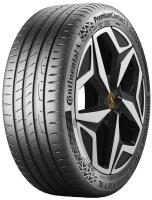
|
The Continental PremiumContact 7 impressively managed wet conditions and energy use, proving to have the best wet braking, be less sensitive to load changes compared to its predecessor and the lowest rolling resistance on test. The PC7 was also the best tire in the deeper water of the aquaplaning tests. Despite its solid performance in new state wet braking, the Continental tire dropped off more than the competition when worn. In addition, while it showed improved maturity over its predecessor, it lost some of its sporty appeal, making it less engaging for those seeking a more spirited drive. The Continental PremiumContact 7 demonstrated impressive abilities in handling wet conditions and excelled in new state braking in both cooler and warmer temperatures. While it couldn't quite match the Michelin in the wear test, it proved to be better value thanks to the lower purchase price. Despite its strong overall performance, it has lost some of its sporty appeal in favour of increased maturity, which might disappoint drivers seeking a more spirited experience, but that maturity has brought improvements in rolling resistance, noise and comfort, proving to be one of the best on test. An impressive second win for the new PremiumContact 7.
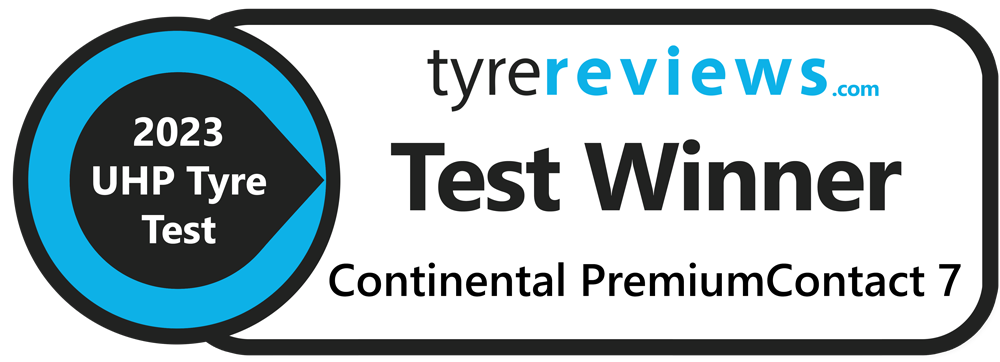 Read Reviews Buy from £102.91 | ||||||||||||||||||||||||||||||||||||||||||||||||||||||||||||||||||||||||||||||||||||||||||||||||||||||||||||||||||
2nd: Michelin Pilot Sport 5 | |||||||||||||||||||||||||||||||||||||||||||||||||||||||||||||||||||||||||||||||||||||||||||||||||||||||||||||||||||
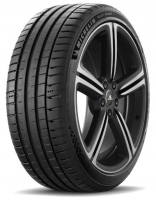
|
The Michelin Pilot Sport 5 stood out for its durability, with the longest tread life among all tires tested. It also maintained consistent performance across various conditions, offering good steering and a progressive understeer balance, and was the tire with the lowest eco impact. The Pilot Sport 5 was the most expensive tire to buy, and would benefit from a little more grip in wet conditions. As you would expect from the Michelin brand, the Pilot Sport 5 stood out for it's impressive longevity, boasting the longest tread life among all the tires tested. It offered a great driving experience with good steering and a progressive understeer balance. The Michelin was also the kindest to the environment, producing the least amount of rubber particulate matter. This isn't a tire we'd rush to take on track, but on the road it is an excellent all round tire.
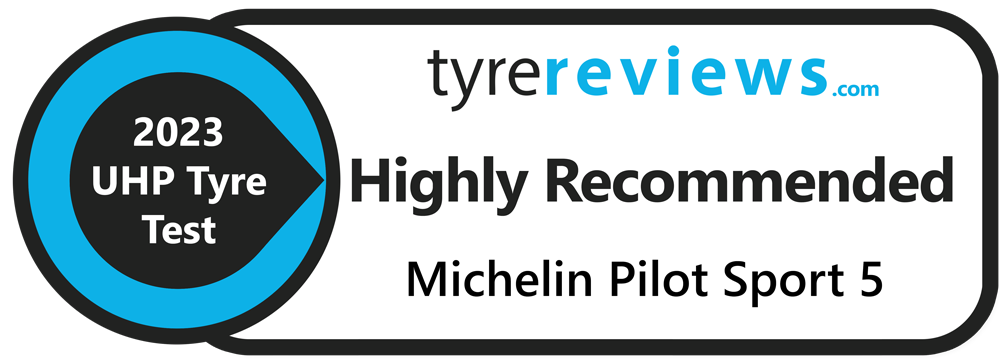 Read Reviews Buy from £111.26 | ||||||||||||||||||||||||||||||||||||||||||||||||||||||||||||||||||||||||||||||||||||||||||||||||||||||||||||||||||
3rd: Goodyear Eagle F1 Asymmetric 6 | |||||||||||||||||||||||||||||||||||||||||||||||||||||||||||||||||||||||||||||||||||||||||||||||||||||||||||||||||||
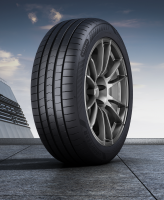
|
The Goodyear Eagle F1 Asymmetric 6 showcased its versatility by blending the safe understeer balance of the Michelin and Continental with sporty handling. Its predictable and fast performance made it a strong all-round choice, particularly for the Golf GTI. It was also the best tire at worn state during the wet braking test, had great comfort and low wear. The Asymmetric 6 is a hard tire to find a negative about, but on track it doesn't seem to have the heat resistance the Asymmetric 5 had. Another very impressive result for the Goodyear Eagle F1 Asymmetric 6, proving to be the most consistent tire across all categories. 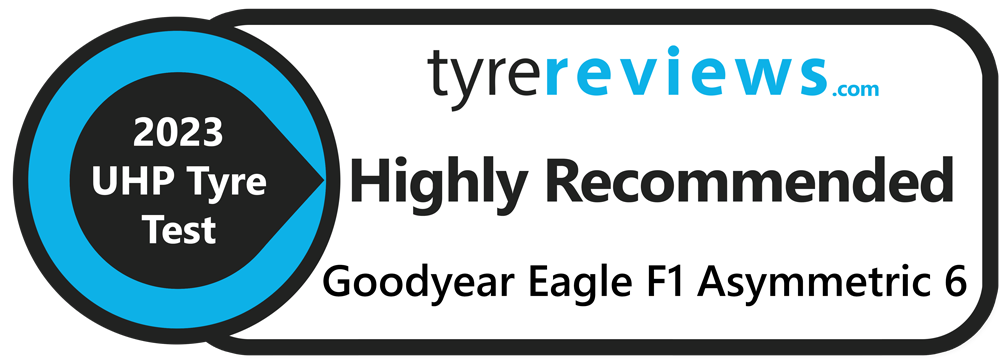 Read Reviews Buy from £101.15 | ||||||||||||||||||||||||||||||||||||||||||||||||||||||||||||||||||||||||||||||||||||||||||||||||||||||||||||||||||
4th: Hankook Ventus S1 evo 3 | |||||||||||||||||||||||||||||||||||||||||||||||||||||||||||||||||||||||||||||||||||||||||||||||||||||||||||||||||||
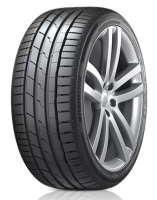
|
The Hankook Ventus S1 evo3 offered excellent value for money and commendable wet grip, with low energy use. The Hankook had the slowest steering response of the test, feeling more like a comfort bias tire than an outright sports tire. It also has one of the lowest aquaplaning resistances on test. The Hankook excelled in terms of value for money and offered commendable grip. They were particularly impressive in handling larger impacts but were less precise to steer and provided less feedback at the limit. Recommended if you're looking for a well priced tire with excellent wet grip and good levels of comfort. 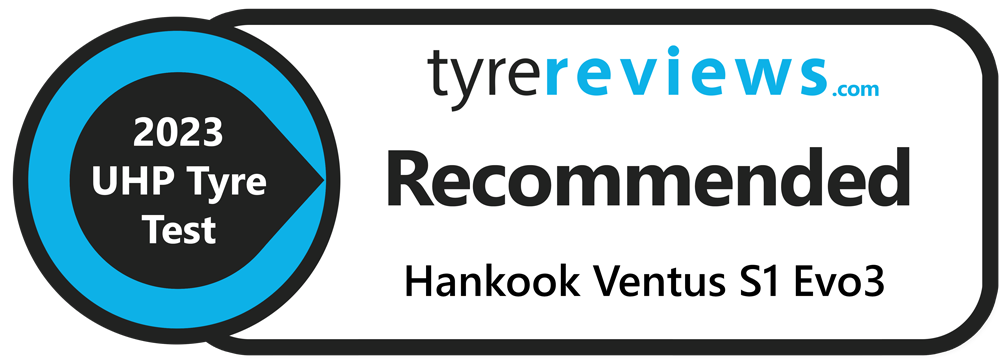 Read Reviews Buy from £97.26 | ||||||||||||||||||||||||||||||||||||||||||||||||||||||||||||||||||||||||||||||||||||||||||||||||||||||||||||||||||
5th: Bridgestone Potenza Sport | |||||||||||||||||||||||||||||||||||||||||||||||||||||||||||||||||||||||||||||||||||||||||||||||||||||||||||||||||||
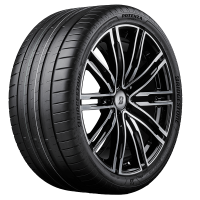
|
The Bridgestone Potenza Sport showed significant grip in wet conditions and a sporty feel, achieving the fastest lap time among the group, and had excellent wet braking when new and worn and produced a low amount of rubber particulate matter making it an environmental choice. The Bridgestone dropped more than some competitors in the cooler wet braking test, and despite its impressive performance on the track, the Bridgestone displayed considerable wear after just three laps on a demanding circuit, indicating potential longevity issues when used on circuits. The Potenza Sport also had a high rolling resistance and struggled in the deeper water of the aquaplaning tests. the Bridgestone also proved to be the worst value on test, costing over 30% more per KM driven than the best in the test. The Potenza Sport is an impressive sports tire with excellent grip in the wet and dry. The tire certainly does better when it's warm, which could be an issue for cooler wet running on the road, and it has high rolling resistance, but as a sports tire for the road, its steering feel and speed is excellent. It is a costly tire to run, but the tradeoff in driving enjoyment will be worth it for many driving enthusiasts. 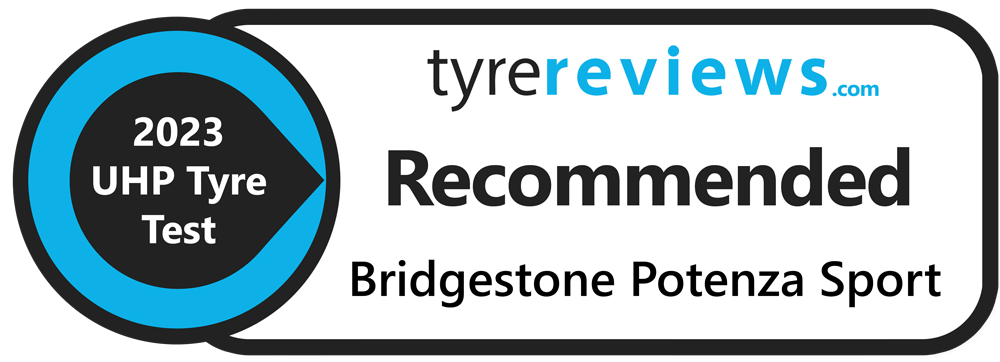 Read Reviews Buy from £88.00 | ||||||||||||||||||||||||||||||||||||||||||||||||||||||||||||||||||||||||||||||||||||||||||||||||||||||||||||||||||
6th: Yokohama Advan Sport V107 | |||||||||||||||||||||||||||||||||||||||||||||||||||||||||||||||||||||||||||||||||||||||||||||||||||||||||||||||||||
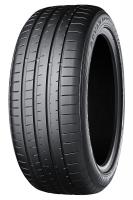
|
The Yokohama Advan Sport V107 offered a uniquely fun and sporty driving experience for those who appreciate a thrill in their drive. The quick steering and greater feedback at the limit distinguished them from the others and was the only tire of the six that took the hot agressive dry handling circuit without showing a considerable amount of wear. the V107 tires struggled with stopping in wet conditions across all tests and required more time to warm up, potentially impacting their performance in cooler climates. They were also significantly rougher over potholes, indicating potential comfort issues and had a high rolling resistance. The Advan Sport V107 provided a uniquely sporty and fun driving experience, with quick steering and greater feedback at the limit. However, they struggled with stopping in wet conditions and required more time to warm up, which makes it less ideal than some of the other tires in this test for use on the road. Furthermore, they were significantly rougher over potholes, indicating potential comfort issues for everyday driving. A charming tire and the best road tire of the group if you plan on doing track days. 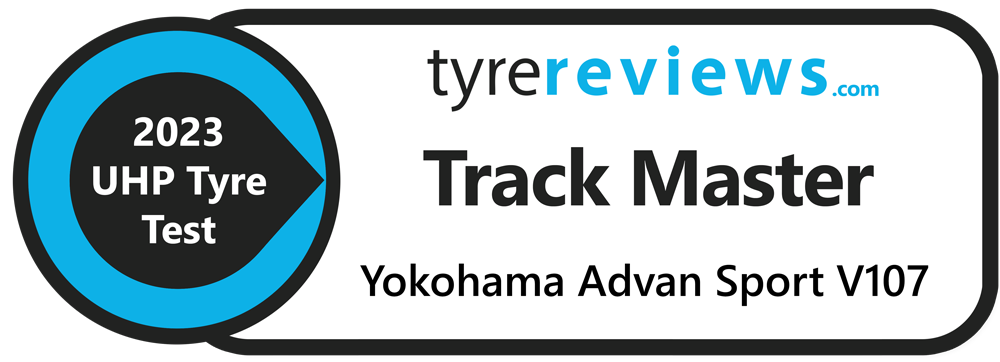 Read Reviews Buy from £112.26 | ||||||||||||||||||||||||||||||||||||||||||||||||||||||||||||||||||||||||||||||||||||||||||||||||||||||||||||||||||





